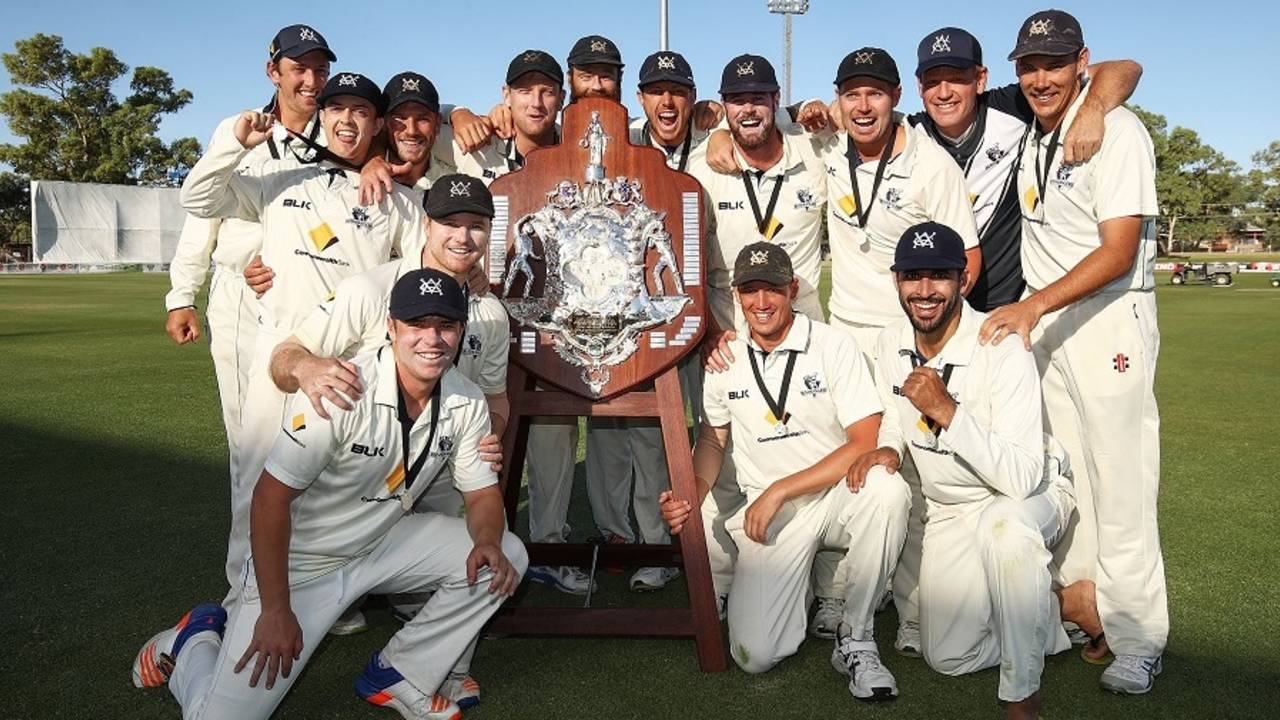Players reject Cricket Australia pay offer
The pay dispute between Cricket Australia and its players is set to continue after the Australian Cricketers' Association rejected CA's latest pay proposal
ESPNcricinfo staff
28-Apr-2017
Cricket Australia's pay proposal "disrespects the value of domestic cricketers", according to the Australian Cricketers' Association • Getty Images
The pay dispute between Cricket Australia and its players is set to continue after the Australian Cricketers' Association rejected CA's latest pay proposal. At the core of the ACA's opposition is CA's desire to scrap the revenue-sharing model that for nearly 20 years has linked player payments to the amount of income generated by the game.
This, in the words of the ACA, would end a partnership "that allows players to share in the ups and downs of the games and its revenue, and allows for fluctuations in media rights cycles". CA has argued that the revenue-sharing system has served its original purpose of making cricketers some of the highest-paid sportspeople in the country.
Under CA's proposal, only international players would have the chance to share in any surplus revenue: CA has proposed a $20 million pool to be split with $16m for international men and $4m for international women. Other players - domestic male and female players - would have to settle for fixed amounts that would not fluctuate according to the game's income.
However, the ACA on Friday argued that the proposal "disrespects the value of domestic cricketers and the role they play in Australian cricket", and that it would create inequity within playing groups. The ACA also said that while CA's response for gender equity had largely been positive, this plan "denies female cricketers the opportunity to share in the game's revenue."
"I've gone round every state player group, male and female, national and domestic, and they're absolutely committed behind the revenue-sharing model because that's something that they believe works, and it's important that that continues on for the next MoU and the generations going forward," Alistair Nicholson, the ACA chief executive, said.
"In the proposal that we reviewed, and then in our discussions with key players on the board, we weren't able to see where the model that has worked well, why it is being called out-of-date or unviable. They're proposing a change in the model, we're saying, the players are saying, we don't want to change the model but we're happy to talk about what sits underneath that, to get the best agreement for the game."
The ACA has offered its own proposal for what it calls a "modernised" revenue-sharing model, with a 55% share for CA, a 22.5% share for grassroots cricket, and a 22.5% share for male and female players. Cricket Australia chief executive James Sutherland said he was disappointed with the ACA's decision to reject the tabled offer, but he remained confident of achieving a resolution by the end of June deadline.
"They appear to have spent nearly six weeks talking with everyone but the organisation that can provide them with the right information, and with whom they need to conclude an agreement on behalf of their members," Sutherland said. "They will find, when they sit down with us and understand the detail, that this really is a ground-breaking offer and a fair deal for all players.
"In particular, it offers higher guaranteed payments at a time of uncertainty, while continuing to provide a share of cricket's financial surpluses to players at the pinnacle of the game. It also allows CA to address the disparity between pay for men and women and the urgent need to invest more in the grassroots of the game, particularly junior cricket. We make no apology for investing in priorities that will secure cricket's sustainable future.
"I must make it clear that the analysis presented by the ACA today contains many errors. We have offered to provide them with realistic financial scenarios, an opportunity they have not taken up. I also reject any suggestion that we would hide money from the players. They receive full audited accounts, and we have always been fair and honest with our players.
"We understand their commitment to the existing model, but the fact is that the world has changed, and it needs to be updated to take that into account. It has to include women, it has to support our juniors and community cricket clubs, and it has to provide greater financial certainty for all players, at every level.''
CA said its proposal would lead to increased pay for all players, with female players receiving an immediate average pay increase of more than 125%, and the average wage for international women's players increasing from $79,000 to $179,000. According to CA's figures, domestic male cricketers would earn an average of $235,000 by 2021-22, up from $199,000 last summer.
"We have placed the emphasis on increasing the guaranteed amount that the men will receive, rather than rely on any projected increase in revenue," Sutherland said. "We understand that the ACA prefers the status quo, but CA believes that the model devised in the 1990s, which is based on a fixed percentage of revenue, has served its intended purpose - to make Australia's cricketers some of the best paid sportspeople in the country."
